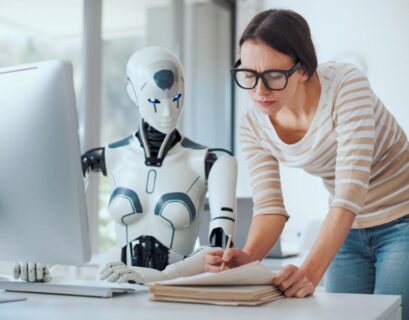AI’s Impact on Human Jobs: Insights from MIT Study
A recent research study from MIT’s Computer Science and Artificial Intelligence Laboratory (CSAIL) delves into the looming question of whether AI will automate human jobs, and if so, which jobs and when.
Various projections have attempted to gauge the influence of current AI technologies, such as large language models, on people’s occupations and entire economies in the future. Estimates from Goldman Sachs suggest that AI could potentially automate 25% of the labor market in the near future. McKinsey predicts that almost half of all work will be AI-driven by 2055. Additionally, a survey by the University of Pennsylvania, NYU, and Princeton highlights that ChatGPT alone could impact around 80% of jobs. Reports from firms like Challenger, Gray & Christmas further emphasize that AI is already displacing thousands of workers.
However, the MIT researchers aimed to move beyond simplistic “task-based” comparisons and evaluate the feasibility and likelihood of AI replacing specific roles in businesses. Surprisingly, their findings suggest that many jobs previously deemed at risk of AI displacement may not be economically viable to automate at present.
The study underscores that while AI holds significant potential to automate tasks, the pace and scale of this disruption might be slower and less drastic than commonly anticipated. Neil Thompson, a research scientist at MIT CSAIL and study co-author, emphasizes that although AI can automate tasks, many of these tasks are currently not economically attractive for automation.
The study primarily focused on jobs involving visual analysis, like inspecting product quality, and did not delve into the impact of text and image-generating models on the workforce and economy. By surveying workers to understand the requirements for AI to replace their jobs, modeling the costs of AI system development, and assessing businesses’ willingness to invest in such systems, the researchers shed light on the economic aspect of AI automation.
For instance, considering a baker’s role, automating food quality checks could potentially save costs, but the expenses associated with deploying and maintaining an AI system for this task may outweigh the benefits. The study reveals that only a fraction of wages paid for vision tasks would be economically viable to automate with AI, indicating that humans remain the preferred choice for certain job aspects.
Despite accounting for cost-effective AI systems, the study suggests that significant job losses due to AI automation may take decades to materialize, even with declining costs. The researchers acknowledge the study’s limitations, such as not considering scenarios where AI augments human labor or creates new tasks and jobs. They also address concerns about potential biases due to the study’s affiliation with the MIT-IBM Watson AI Lab.
In conclusion, the study emphasizes the importance of preparing for AI job automation while highlighting the gradual nature of this transition. It calls for efforts to reduce AI deployment costs and expand deployment possibilities to make automation economically viable for businesses.










